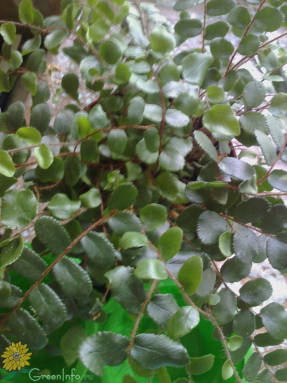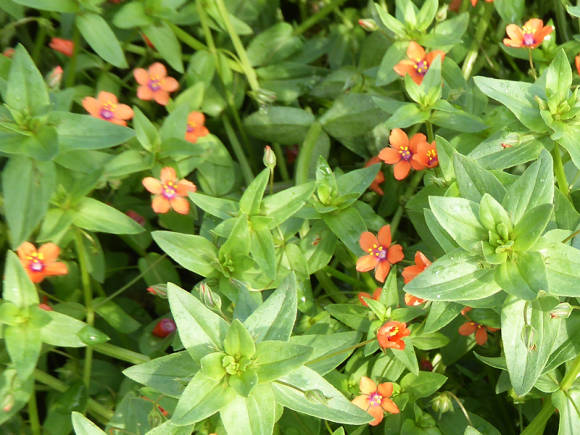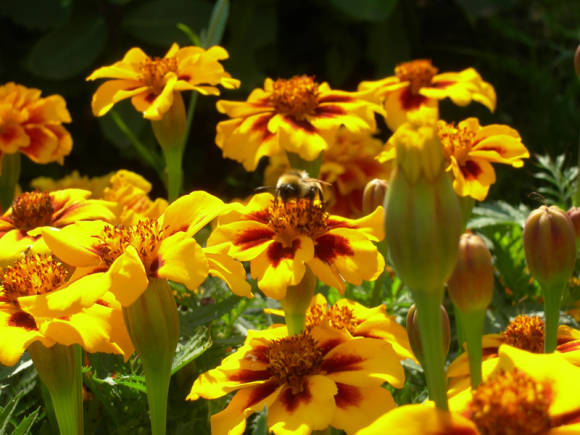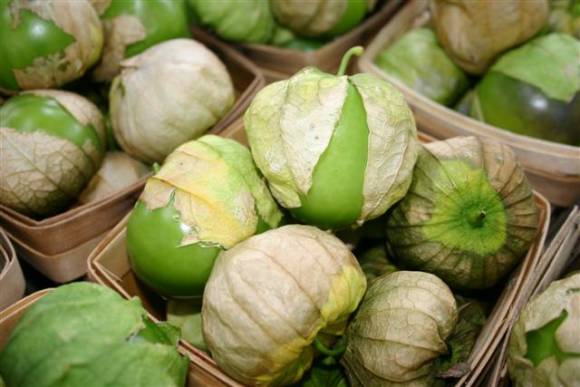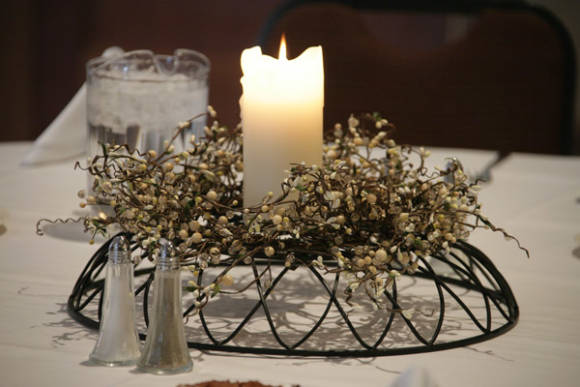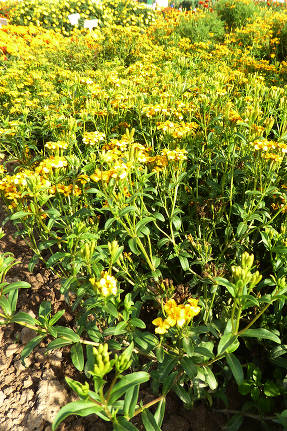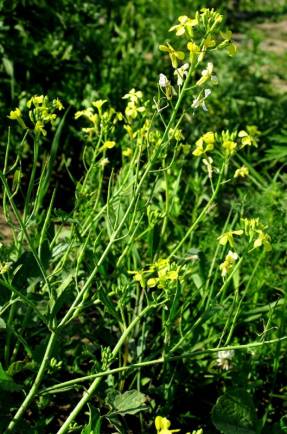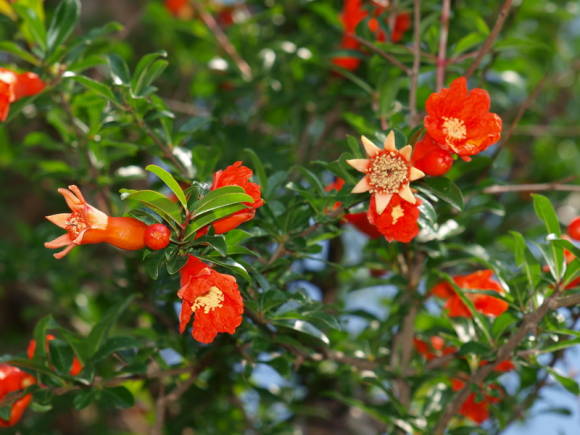Euonymus (Euonymus) belong to the family of euonymus (Celastraceae)... This vast genus includes more than 120 species distributed in Europe, Asia, Australia and America. In nature, euonymus grow in valleys and floodplains of rivers, as well as in the undergrowth of mixed forests. Shrubs begin to bloom in late spring, simultaneously with the blooming of leaves. Small, completely inconspicuous flowers are yellow, greenish-white, cream and maroon. They smell unpleasant and are pollinated by insects. The euonymus has unusual poisonous fruits with bright seedlings. The leaf arrangement is opposite.
 |
In addition to deciduous tall euonymus, low evergreen shrubs are known, which are characterized by weaker winter hardiness. Many graceful species of this group are suitable for planting among stones in rockeries and rock gardens.
Dwarf spindle tree (Euonymusnana) naturally grows from Europe to Western China, including the mountainous regions of Western Ukraine, Moldova, Crimea, the Caucasus and Mongolia. It is an evergreen shrub about 30 m high with narrow leathery leaves 3-4 cm long. Shoots are green and greenish-gray, with longitudinal grooves. The flowers are small, 5-7 mm in diameter, with 4 greenish-brown petals, appear in June. In autumn, pink 4-lobed pear-shaped bolls are formed, however, in our strip, the shrub rarely bears fruit.
 |  |
In culture, the species has been known since 1830. It is planted under a thin canopy of trees in small groups, used for landscaping in England. Although it is thermophilic, it is preserved in the old parks of the Moscow region, growing by rooting creeping shoots and escaping under the snow in winter.
Coopmann's euonymus (Euonymuskoopmannii) is very similar to dwarf euonymus, its height is no more than 1 m. This species occurs in the mountainous regions of Central Asia (Tien Shan and Pamir-Altai). Shoots are the same, green, ribbed, mostly lodging and spreading by rooting. Ascending shoots with narrow-lanceolate or linear-lanceolate leaves 1.5-5 cm long. Leaves above are shiny, leathery, glaucous below. Greenish flowers about 5 mm in diameter sit singly or are collected in half-umbels of 2-3 pieces. Four-lobed bolls are not formed in our zone. In culture, the species has been known since 1883, is used in America, England and Germany, in Russia it is very little widespread.
Japanese euonymus (Euonymusjaponica) comes from China and Japan, where the height of the evergreen shrub reaches 6-8 m.Greenish-brown shoots are tetrahedral in cross section. The leaves are obovate, 2-7 cm long, with a rounded top and a wedge-shaped base. Greenish-white flowers with a diameter of 5-8 mm with 4 petals, collected in umbellate inflorescences. Fruits are four-nested boxes with pink orange seedlings, but in our conditions they are not always set.
The species has been cultivated since 1804. Ornamental-deciduous forms are known:
 |  |
- Aureo-Variegata (Aureo-Variegata) with yellow-spotted leaves;
- Argenteo-Variegata (Argenteo-Variegata) with white-spotted leaves;
- Albo-Marginata (Albo-Marginata) with white edging on the leaves;
- Aureo-Marginata (Aureo-Marginata) with golden edging of leaves;
- Macrophylla (Macrophylla) with larger leaves up to 7 cm long;
- Compacta (Compact) has a compact crown and small size;
- Pyramidata (Pyramidata) with a pyramidal form of growth and wide-elliptical leaves.
Due to the low winter hardiness in Central Russia, it can only survive under snow, therefore it grows as a low-growing shrub about 1 m high.Conditions are more favorable for it in the south of Russia, in the Crimea, in the Caucasus, in Moldova, in the southern regions of Belarus and Ukraine.
Fortune's eonymus (Euonymusfortunei) originally from China. It is closely related to the Japanese euonymus. This is a small evergreen shrub 20-40 cm high with creeping shoots covered with elliptical or oblong-ovoid dense shiny leaves.The appearance of small greenish flowers in Moscow is noted occasionally, and practically no fruiting occurs.
The species has been known in culture since 1907. Among evergreen euonymus, its variegated varieties are most often brought to Russia from European nurseries. The following are especially popular:
But, unfortunately, many of these varieties do not bloom and do not tolerate the climate of Central Russia well. These euonymus prefer fertile and slightly alkaline soils, do not like stagnant moisture. If the soil is acidic on the site, then lime should be added. For planting, open areas are selected, because in the shade of variegated varieties, decorative qualities are reduced. However, when the sun is too bright, the leaves fade and their edges curl up. Plants are usually planted in spring in groups, at a distance of 50-70 cm from each other. During the period of active growth, fertilizing with complex fertilizers is very useful, but already at the end of summer they are stopped in order to slow down growth and give the bushes a better preparation for winter. The spindle trees are well cut, therefore, their crown is often formed in the form of a ball, cone or ellipse. The pliability and flexibility of the shoots of the Japanese spindle tree allows them to be used in the formation of the "bonsai" culture. Evergreen euonymus is most often propagated by root suckers or layering, less often by cuttings, grafting and seeds. Root offspring dug up in the spring and transplanted to a permanent place. To obtain the shoots of the mother plant from the euonymus, they are covered with soil, they easily root, after which the daughter bush with a developed root system is cut with shears and transplanted to the chosen place. Dwarf euonymus and Japanese can inoculate on the European euonymus, then you get a decorative weeping form, which will have to be taken care of in the fall so that it does not freeze out. For cuttings euonymus in June-July, young elastic cuttings 4-6 cm long are cut off. For their rooting, a film greenhouse is used, planted in a fertile substrate, which consists of leafy earth and sand (3: 1), sprinkled on top with a layer of sand of 5 cm. It is more difficult to propagate euonymus by seeds, because they do not always ripen and can only germinate in the second year. Freshly harvested seeds are cleaned from seedlings and treated with a pink solution of potassium permanganate. When sown in autumn in moist soil, they are covered with foliage or straw. If sowing is delayed until spring, then stratification is needed. Seeds for 3-4 months. stored at a temperature of + 10 + 12 ° C, and then transferred to a warmer room (where 0 + 3 ° C) until the sowing date. The mixture for sowing euonymus seeds consists of leaf, turf, humus soil and sand (4: 1: 2: 1). Seeds are sown to a depth of 2-3 cm.




Emerald'n Gold (Emerald Gold) - a bush 40 cm high, elliptical leaves up to 3 cm long, their middle is marbled or gray-green, and along the edge there is a light yellow or lemon-yellow border 2-4 cm wide, in spring the leaves are yellow , and in the fall they become bright pink;

Growing and care
Reproduction

